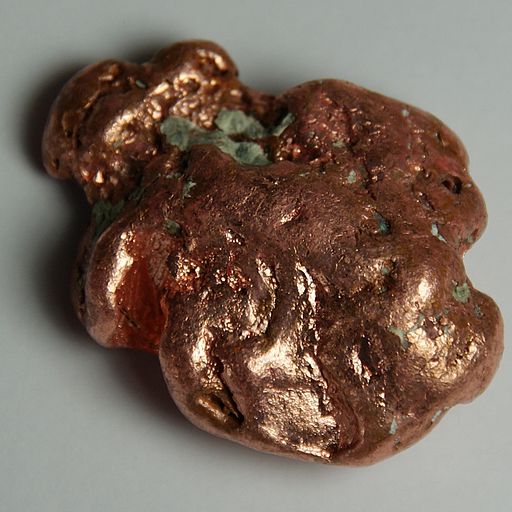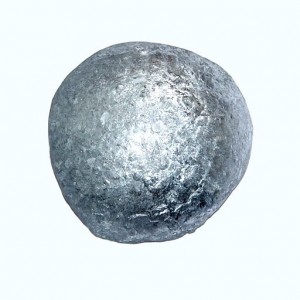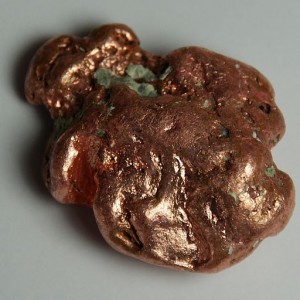Decisions…bottom paint #2

For us, choosing an “environmentally-friendly” versus “traditional” paint really isn’t that hard of a choice. We will do what we can to minimize our impact, and if that means we have to clean the bottom of our boat more often and/or haul out to repaint the bottom more frequently, then so be it. So, what are our greener choices then? It turns out that we can consider copper-free options, as well as a paint that actually contains copper, but only releases miniscule amounts of copper into the water.
The EPA recently published a fairly comprehensive, multi-season study of bottom paints in San Diego Bay which we used to help us better understand the technologies. Based on this report, anecdotes from sailing and cruising bulletin boards, and manufacturer websites, we narrowed our focus to a hard finish copper-free paint, an ablative copper-free paint, or a copper-impregnated epoxy:
♦ ePaint EP-2000
♦ Petit Vivid Free
♦ Coppercoat
ePaint EP-2000 is a hard finish, water-based paint that uses zinc and a “photo-active” process to repel marine growth. Whoa, it uses zinc? Isn’t zinc just another heavy metal like copper, and the tin commonly used before copper? It is, and it actually is on the US EPA’s list of priority pollutants, under the US Clean Water Act. Most boats already use zinc anodes as an anti-corrosion approach to prevent electrolysis, so it is known for its “toxic” properties. How “environmental” this chemical approach to anti-fouling is will need to be evaluated – for now, it is clear, though, that 1) copper is a major pollutant of concern in many areas because monitoring shows levels are very high, and 2) there will probably be some trade-offs for boat anti-fouling and water quality, keeping in mind that more fouling can also have other environmental impacts such as greater fuel use requirements. We’re doing our best based on the information we have! Please feel free to add your comments if you have other information or perspectives.
Back to EP-2000…this paint has some clear advantages. It is a hard paint, meaning it can be sanded and burnished very smooth which produces a faster bottom – who am I to turn away “free” speed? We bought a performance-cruiser for a reason and let me tell you, the bottom on Shearwater is currently as smooth as any bottom I’ve seen with bottom paint on it. From a racer’s perspective the bottom is perfect, but alas the paint is VC17, a freshwater-only paint. Another nice thing about EP-2000 is that the boat can be hauled out without destroying the effectiveness of the anti-fouling. Since we plan to haul out at New England Boatworks (NEB) in Portsmouth, RI, for 3 months this spring, that may be important (or not, read on). EP-2000 was also rated “Excellent” for anti-fouling in a Practical Sailor bottom paint test conducted in Florida waters. At this point we have a winner, right?
Not so fast. A little googling reveals that EP-2000 seems to wear away quickly, particularly at the waterline, and the coverage of a gallon of the paint doesn’t go very far, requiring more paint. Also, each coat of paint must be applied a day after the previous coat. There are also reports of the paint not adhering to hulls well, but it may have been that the application method differed significantly from what we would plan to do (so-called “hot-coating” to slightly uncured epoxy, versus our approach of sanding with 80-grit sandpaper to “key” the surface for the paint to adhere). And then there are two first-hand experiences of the paint simply not working as an effective anti-fouling on Long Island. Practical Sailor says it works, two people that I know say it doesn’t work. Is the effectiveness location dependent? Probably. Our immediate interest is the Med and if I had to choose, I would say the waters of Florida are more like the Med than Long Island Sound. There is one more small disadvantage to EP-2000. The minimum application temperature is 60°F and temperature should remain above that for at least 16 hours. That is going to be a tough requirement to meet in Annapolis in April. It is possible, but certainly not a guarantee. We could delay painting until before launching in June up in Rhode Island, if we had to. However, painting in April is more convenient and would give us at least a small test of the effectiveness and adherence during the trip up to Rhode Island. All that said, it seems like EP-2000 might be a good option. From my perspective, I am most concerned about adhesion and wear. Once we launch Shearwater from NEB in June, I hope to avoid hauling out again for several years, and this may not be possible with the EP-2000. Finally, it may sound superficial to some (many?), but one thing that I really like about the EP-2000 is that it is available in orange. I would like to paint the keel and rudder orange. How cool would that be?!
Petit Vivid Free, is an ablative, zinc-based anti-fouling paint. It is unlikely to have adherence issues, and it has worked reasonably well as an anti-fouling, in the EPA panel results study in San Diego Harbor. The ablative action assists in anti-fouling because as the paint slowly wears away the marine growth goes with it. Vivid Free is cheaper than the other options, but in the grand scheme, it’s not that big of a difference. It is certainly easy to apply and can be done all in one day compared to the 3 days it would take to apply EP-2000, but in our case time is not an issue. We easily have a week, even more if necessary, to get this job done. Vivid Free remains effective after a haulout like EP-2000. So far so good? What are the downsides? Well, the biggest downside to Vivid Free is the fact that is an ablative paint. Ablative paints by their nature aren’t super smooth, so it doesn’t appeal to my performance interests. Also, ablative paints are designed to wear away, which means it may not last multiple seasons, particularly if we use the boat a lot. I’ve never associated an ablative paint with performance or long-distance cruising for those reasons. Finally, it is becoming more common for states and countries to ban underwater cleaning of ablative paints because of the “plume” that is created by the easy to remove paint. We would be leary of diving to wipe any growth off the bottom, anyway, as this actively introduces the paint chemicals into the water column (and furthermore, could be illegal to do!). Vivid Free seems to be middle-of-the-road. It’s the classic compromise. No fatal flaws, some disadvantages, but easy to apply and appears to be the most economical option. Complicated isn’t it?
The final option we are considering is Coppercoat. This paint relies on copper suspended in epoxy to prevent marine growth. In this case very little copper is released into the environment so it is considered environmentally-friendly. Coppercoat has a number of advantages. First off, it is a hard paint that can be sanded smooth. Performance, check! Adherence of epoxy is not an issue and in fact, Coppercoat goes one better than most paints. It is so resistant to wear that the manufacturer claims one application will last up to 10 years. Imagine not having to repaint for 10 years! Ooo la laa… There is a lot of positive press out there for Coppercoat. Magazines in the UK have given it awards after testing. You can easily find numerous anecdotal reports of positive experiences, even boats with 5 or more years with minimal marine growth. It sounds pretty impressive. There does seem to be a slant to better experiences in cold water, but that may be due to the paint being manufactured nearby in the UK. We plan to visit northern Europe as well as the Med, so we can’t really favor a paint for its effectiveness in cold or warm water particularly if we are looking at multiple years of service. So what are the downsides? Well, cost for one. Not surprisingly a product touted for a 10-year life has a premium price, but again the cost difference isn’t huge relative to the overall cost of the boat. Coppercoat, being an epoxy, would be hard to remove, but if it works, who cares, and if it doesn’t we could most likely paint right over it. In fact, the epoxy could serve as an additional barrier to osmosis in the hull, which is never a bad thing. Coppercoat is more difficult to apply than Vivid Free. The application of 4 coats needs to be done in one day and that could be a challenge, especially for one person. Our major concern was trying to find out if the use of this paint technology is banned in the countries that appear to be actively restricting copper bottom paints (Sweden, Norway and Denmark), but cannot find anything to verify Coppercoat is restricted. In fact, the manufacturer appears to have distributors in Norway and Denmark, suggesting that it is allowed. Finally, Coppercoat is weird. It is unlike traditional bottom paints and would likely attract an audience during application and during haulouts. The pronounced copper color, becoming green over time is a dead give-away that you aren’t putting on a “normal” bottom paint. All things considered though, it sounds promising.
The decision remains difficult. One thought I had was to paint the hull with either Vivid Free or Coppercoat and paint the keel and rudder with the EP-2000. This gets me my orange paint (!!!) and would allow us to test the effectiveness of two paints at the same time. The downside to that is that if either paint is not effective then we will need to haulout and repaint. Finally, I’ve considered painting everything with Coppercoat and then painting over the keel and rudder with orange EP-2000. This gets me my orange paint, allows us to test two paints, but if EP-2000 is not effective or wears too quickly the Coppercoat will be underneath to take over. Of course, that is the most expensive option of all.
What to do?
2 comments
Leave a ReplyCancel reply
Sign up to receive blog updates


Nice post, have you updated? What is your experience? I’m deciding the same thing now.
Hey Jay – thanks for the note. We’re actually really happy with Coppercoat so far. The big surprise was the condition of the bottom when we hauled out to ship the boat to CA recently. It really was impressively clean. Granted, we’ve had a diver clean the bottom maybe 3-4 times since the “installation” in April 2012, but even with that maintenance, it seems pretty good to us. We were really surprised at how well the condition of the bottom was given the warm waters in TX (had been expecting something, but there wasn’t much of anything). Several of the yard guys even asked about it, and one mentioned that it might put him out of business. I don’t totally agree with that, but we’re pretty happy.